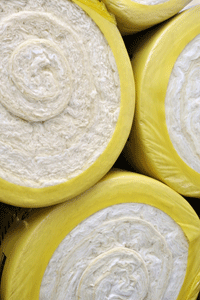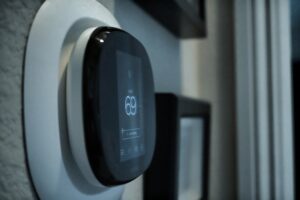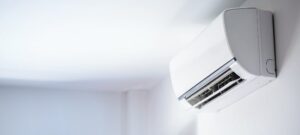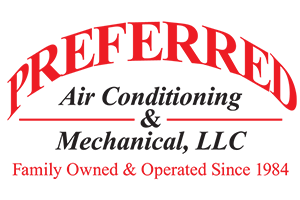4 Things to Consider Before Tackling an Attic Insulation Project
 Rolling out new or extra attic insulation may seem simple enough on a TV commercial, but there are a few more steps involved when it comes to installing insulation. Read on to become familiar with the installation process and ensure maximum benefits of your investment for a job done right.
Rolling out new or extra attic insulation may seem simple enough on a TV commercial, but there are a few more steps involved when it comes to installing insulation. Read on to become familiar with the installation process and ensure maximum benefits of your investment for a job done right.
Benefits of Adequate Attic Insulation
Adding insulation to the attic and/or replacing damaged insulation results in lower cooling and heating bills. Insulation blocks or inhibits the natural movement of heat energy (i.e. heat gain/loss) from a warmer location to a cooler location. This may occur by conduction through solid objects or via convection or radiation.
Insulation may be more closely associated with saving heating dollars in cooler regions of the country. However, adding insulation to the attic in your Palm Beach home is very beneficial to minimizing cooling bills. It’s not uncommon for attic temperatures to exceed 130 degrees. Without good attic insulation, that heat energy seeks to move into the living spaces and drive up cooling bills. During the heating months, insulation blocks the heat inside the living spaces from transferring to the cooler attic.
Better home comfort is always an important issue in our region. Insulation that’s insufficient, damaged or uneven contributes to uncomfortable temperatures in the home. By upgrading or installing new insulation, your home will be more comfortable, which means less fussing over thermostat settings, too.
Types of Insulation
The type of insulation material you choose depends on your budget and the intended project. If you’re adding more insulation to existing insulation to reach the R-30 to R-60 threshold, as suggested by the U.S. Department of Energy (DOE), you may decide to use the same type or a lighter-weight insulation type on top.
For renovations and new homes, you have more options to consider for delivering the greatest comfort, energy savings and return on investment.
- Rolls and batts: Rolls and batts offer easier installation for do-it-yourself homeowners. These insulation types are made of mineral materials, such as rock wool and fiberglass. You may select widths to fit nicely between the joists.
- Loose fill: Loose-fill insulation is better installed with pneumatic equipment for even and quicker distribution. Loose-fill insulation is available in fiberglass, rock wool and cellulose.
- Foam-in-place insulation: Foam-in-place insulation is blown into place by your HVAC professional. Closed-cell foam-in-place insulation offers double or more R-value than fiberglass and cellulose, but it is more expensive. However, for new home construction, this type of insulation offers superior insulation and air sealing throughout (attic, walls and floor) for a nice tightly-sealed home.
- Rigid foam board: The attic hatch needs insulation, too. Rigid foam board is an excellent choice for this purpose.
Air Sealing and Attic Ventilation
The average homeowner can save as much as 20 percent on heating and cooling when combining air sealing with insulation, says the U.S. Environmental Protection Agency (EPA). Sealing the attic from the living spaces is imperative in order to maximize comfort, energy savings and the benefits of new insulation.
Air leaks are common around the attic hatch, recessed lighting and protrusions through the ceiling, such as piping, wiring and ductwork components in some cases. Air leaks may be sealed with weatherstripping, caulk and small spray cans of expanding foam sealant.
Attic ventilation is important for maintaining a healthy roofing system and preventing pockets of moisture, mold and mildew from forming on insulation, which renders it useless. Consider having wind baffles installed along the eave to promote airflow from the soffit to the attic. Mechanical ventilation, which provides continuous air circulation, is cost-effective considering the benefits, and solar ventilating fans are available to reduce electricity consumption.
Does Your Attic Need Professional Help?
Properly installing attic insulation and air sealing the attic aren’t simple tasks. There are safety factors to consider when venturing up into an attic, including heat exposure, protruding roofing nails and the chance of taking a wrong step and falling through the ceiling. It happens. Moreover, fire hazards need to be addressed when installing insulation.
The best approach is to bring in a trusted HVAC contractor to discuss the project to get an idea of your options, costs and general advice regarding practical home efficiency upgrades throughout. For instance, you may decide to check wall insulation and seal up air leaks throughout your home. Perhaps your windows could use new treatments for interior design and curbing energy costs.
For more expert advice about attic insulation, or for other home comfort needs, contact Preferred Air Conditioning & Mechanical, LLC
Image Provided by Shutterstock.com
You May Also Like

Learn More About the New HVAC System Restrictions
As of 2023, Florida has rolled out new regulations governing HVAC systems to address environmental concerns and improve energy efficiency across the… Continue Reading Learn More About the New HVAC System Restrictions…

What Makes a Smart Thermostat Screen Go Blank
A smart thermostat should display a lot of information on its screen that keys you into the state of your HVAC system… Continue Reading What Makes a Smart Thermostat Screen Go Blank…

Troubleshooting Your Ductless Heating System in Delray Beach, FL
Ductless heating systems can experience issues similar to other types of heaters, especially when neglected and not maintained. Let’s look into the… Continue Reading Troubleshooting Your Ductless Heating System in Delray Beach, FL…
